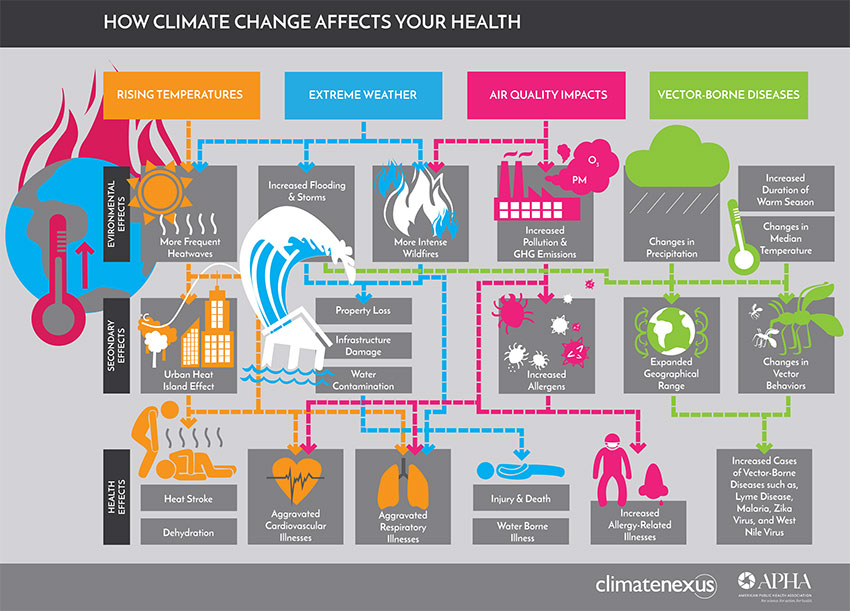Practice Tip of the Week: Climate Change and Health
Monday, October 28, 2019
(0 Comments)
Posted by: Roy Muyinza

By: Kanaka Sathasivan, MPH
Recently, nurses marched in Washington to demand action on climate change. However, online comments on the article show that many nurses are not up to date on the evidence showing a relationship between climate change and health. Climate change is not just a political talking point — it’s real and tens of thousands have already died from its effects.
Nursing is an evidence-based profession. Regardless of political affiliation, scientists across the world agree that evidence shows climate change is happening and it’s having a measurable effect on health. Some studies have classified the health impacts of climate change as direct (effects of extremes in local weather) or indirect (effects of changes in processes like water quality or farming).
From antibiotic resistance to chronic disease to environmental impacts, nurses need to be aware of how climate change has already and will continue to affect the health of Texans. Here are a few examples of direct and indirect trends health care providers have already seen.
Infectious Diseases
Vector-borne pathogens: With increasing temperatures come increasing numbers of mosquitos and ticks. Globally, this means an increase in malaria and dengue fever. In the U.S., it means an increase in West Nile and Lyme disease, which has doubled from 1991 to 2013.
Water-borne pathogens: Both drought and extreme flooding can lead to contaminated water sources. Globally, 51% of water-borne outbreaks happen after heavy precipitation. In Texas, we’ve already seen more frequent toxic algae blooms and flesh-eating bacteria caused by warmer water.
Respiratory and Heat-Related Illness
Allergy and asthma: Warmer days means more time for flowering plants to produce pollen. Higher pollen counts and a longer allergy season means worse allergic responses and an increase in asthma-related conditions.
Extreme temperature: Most dangerous to children, the elderly and the poor, high temperatures can lead to heat stroke and other illnesses. Many residents in northern parts of the world without air conditioning or fans are at increased risk. And recent studies show that rising heat has lead to epidemics of kidney disease.
Cardiovascular disease: In addition to being associated with extreme heat, increased particular matter in the air from pollution and wildfires has increased the risk of CVD by 15 percent.
Natural Disasters
Increased flooding: In addition to physical threats — drowning, injuries, loss of access to food or medical aid — increased flooding, rainfall and more intense hurricanes in the future means higher exposure to pathogens, leading to gastrointestinal illnesses. Flooded buildings are also susceptible to mold, which can increase respiratory problems.
Intense wildfires: Wildfires have increased in incidence and intensity since the 1980s. Fires means higher particulates in the air causing increased respiratory disease, and loss of homes and property mean less access to shelter and protection from smoke inhalation.
For more information:

|